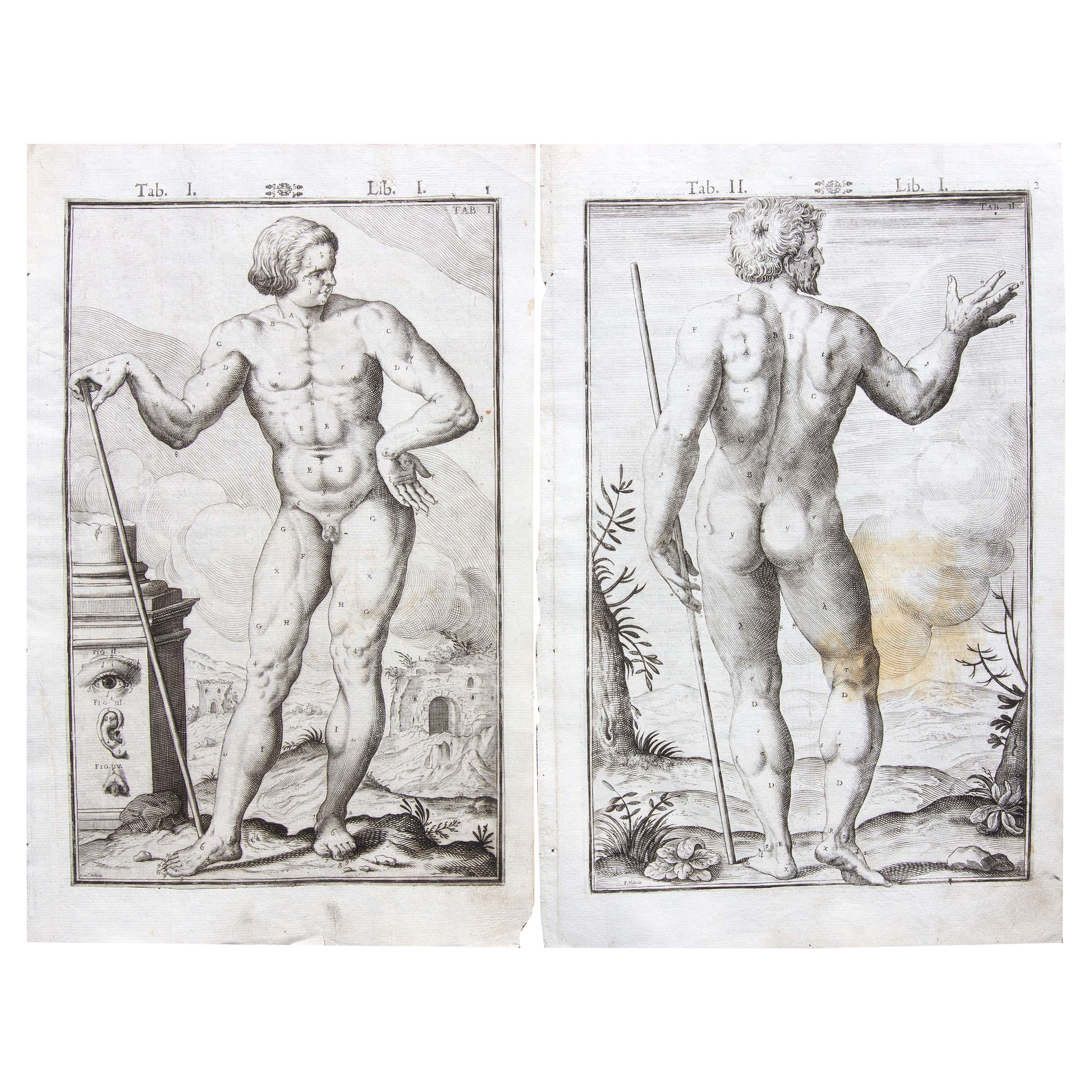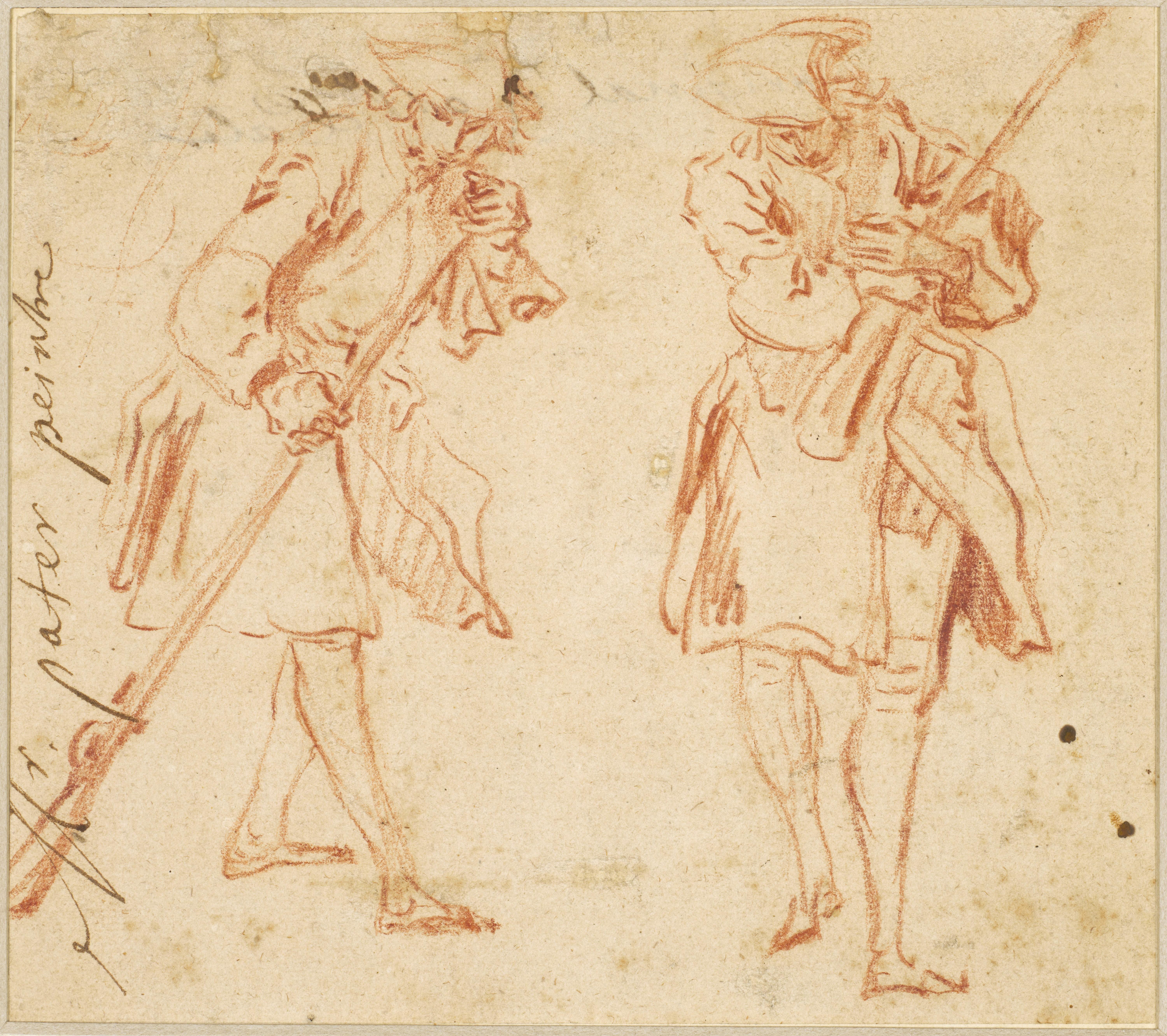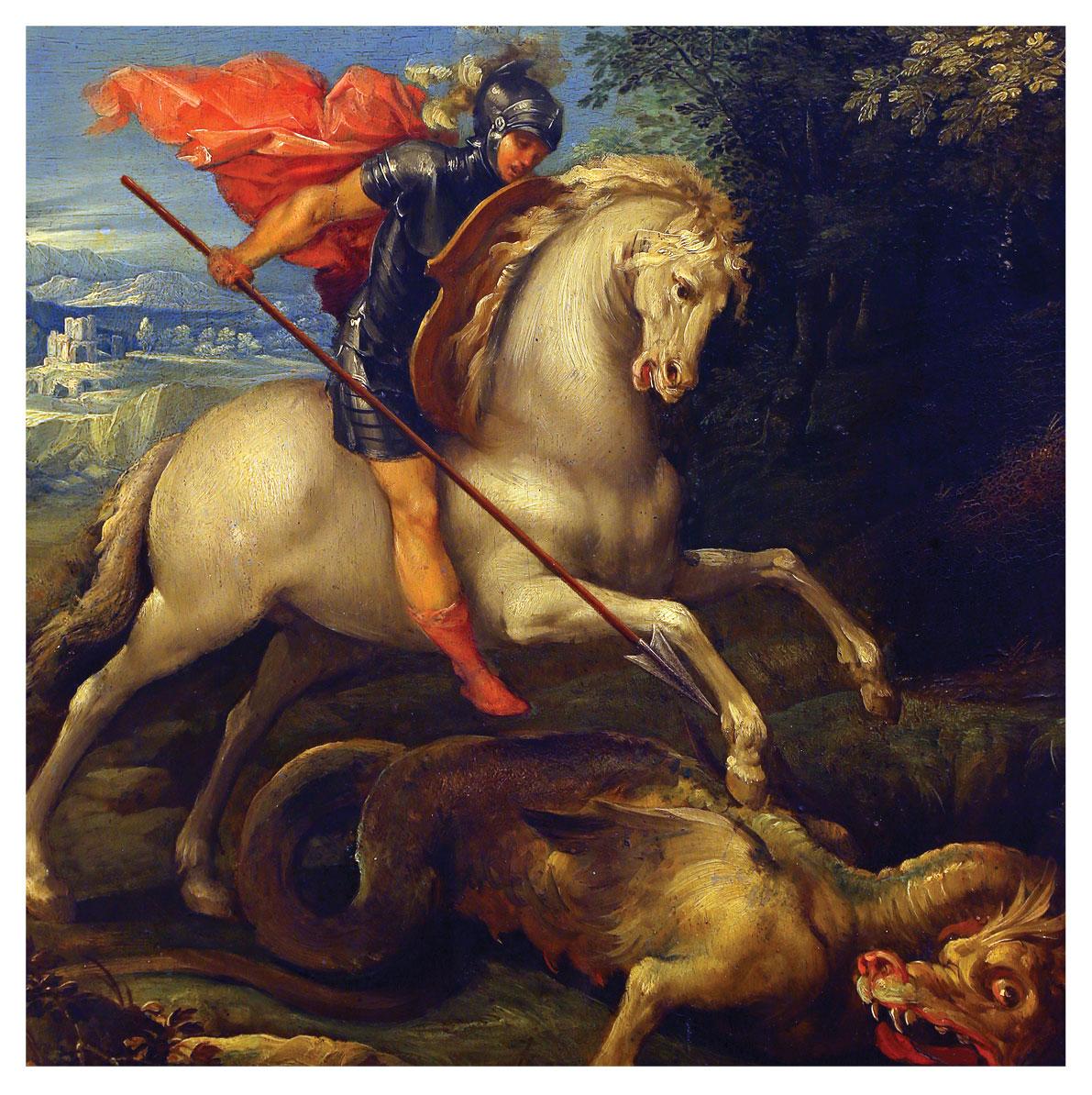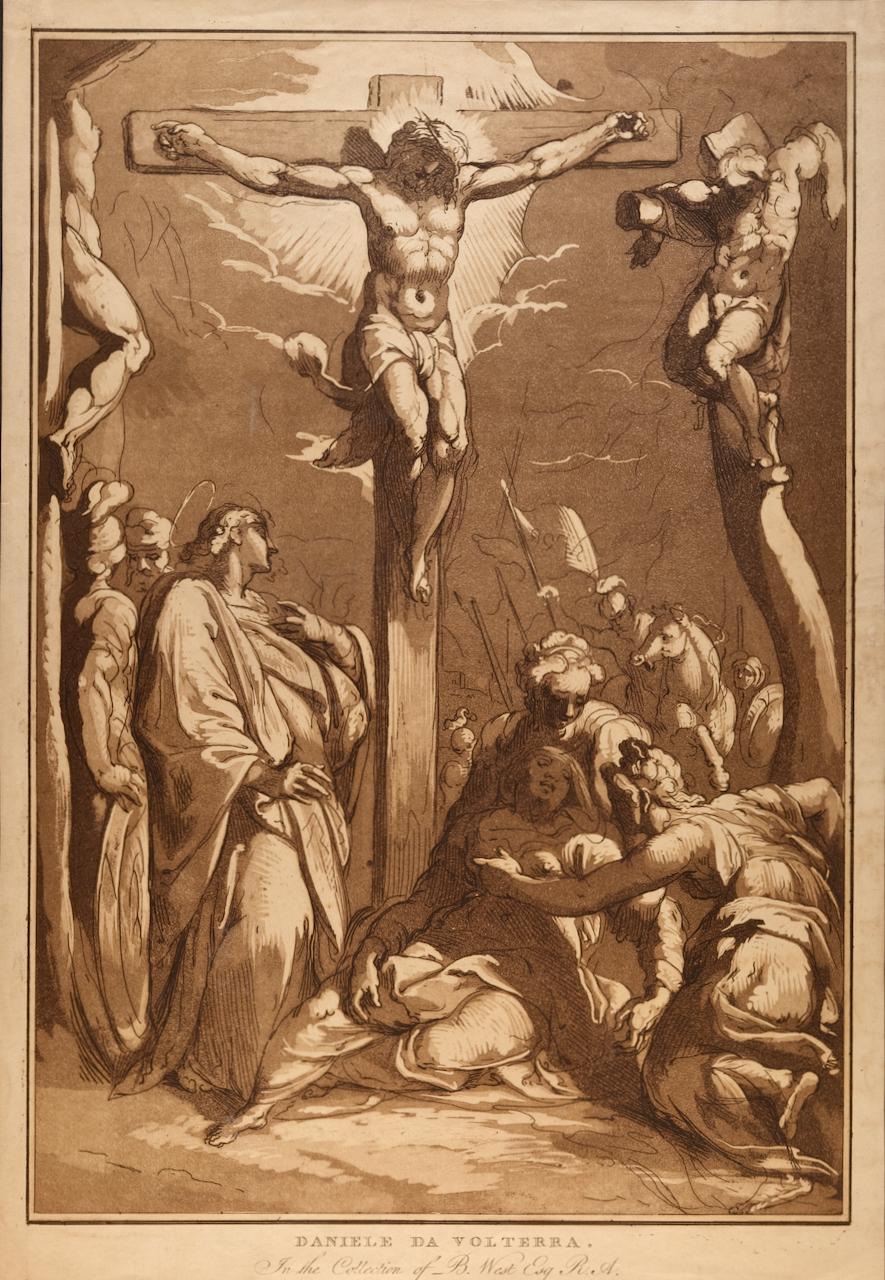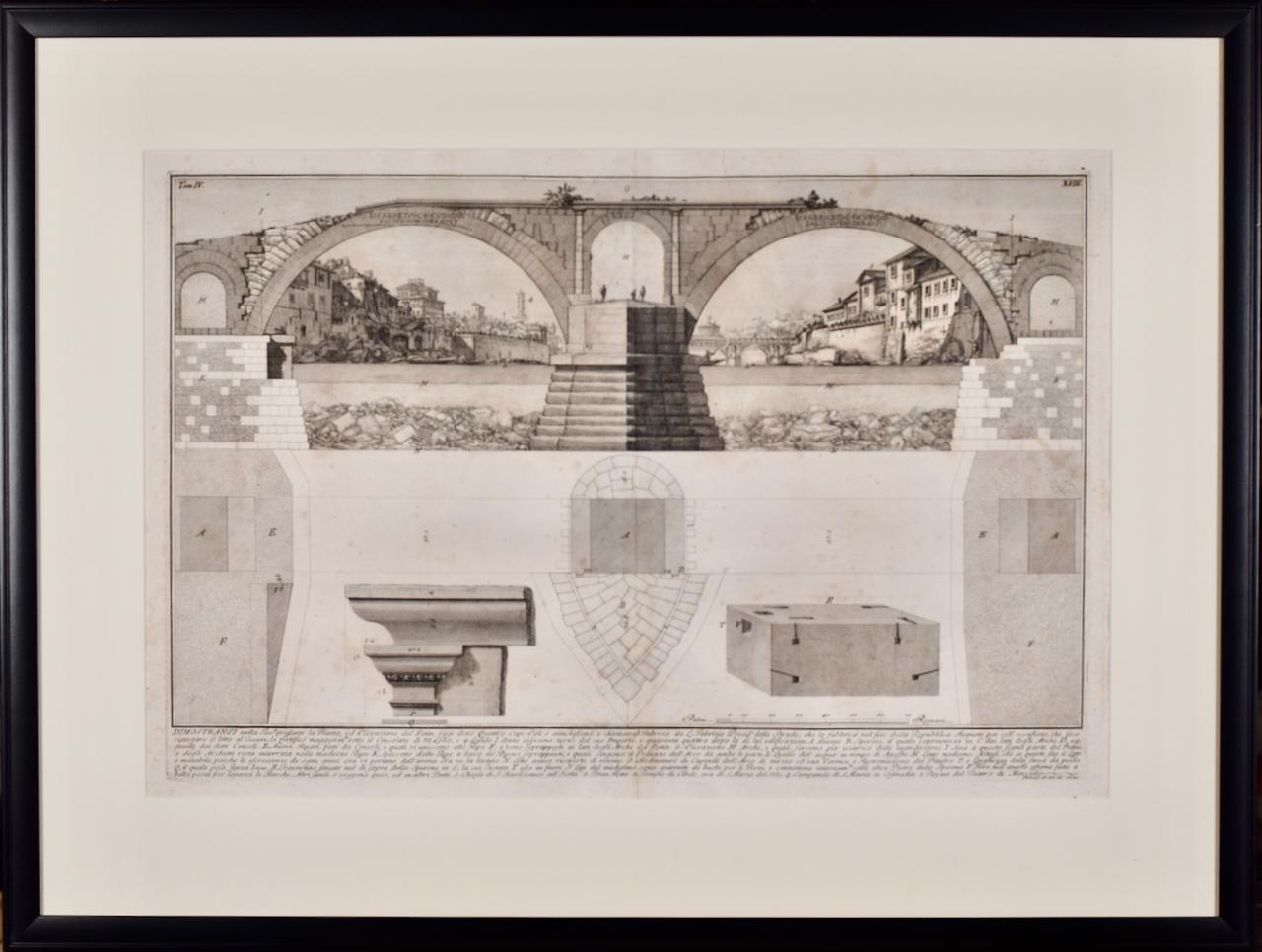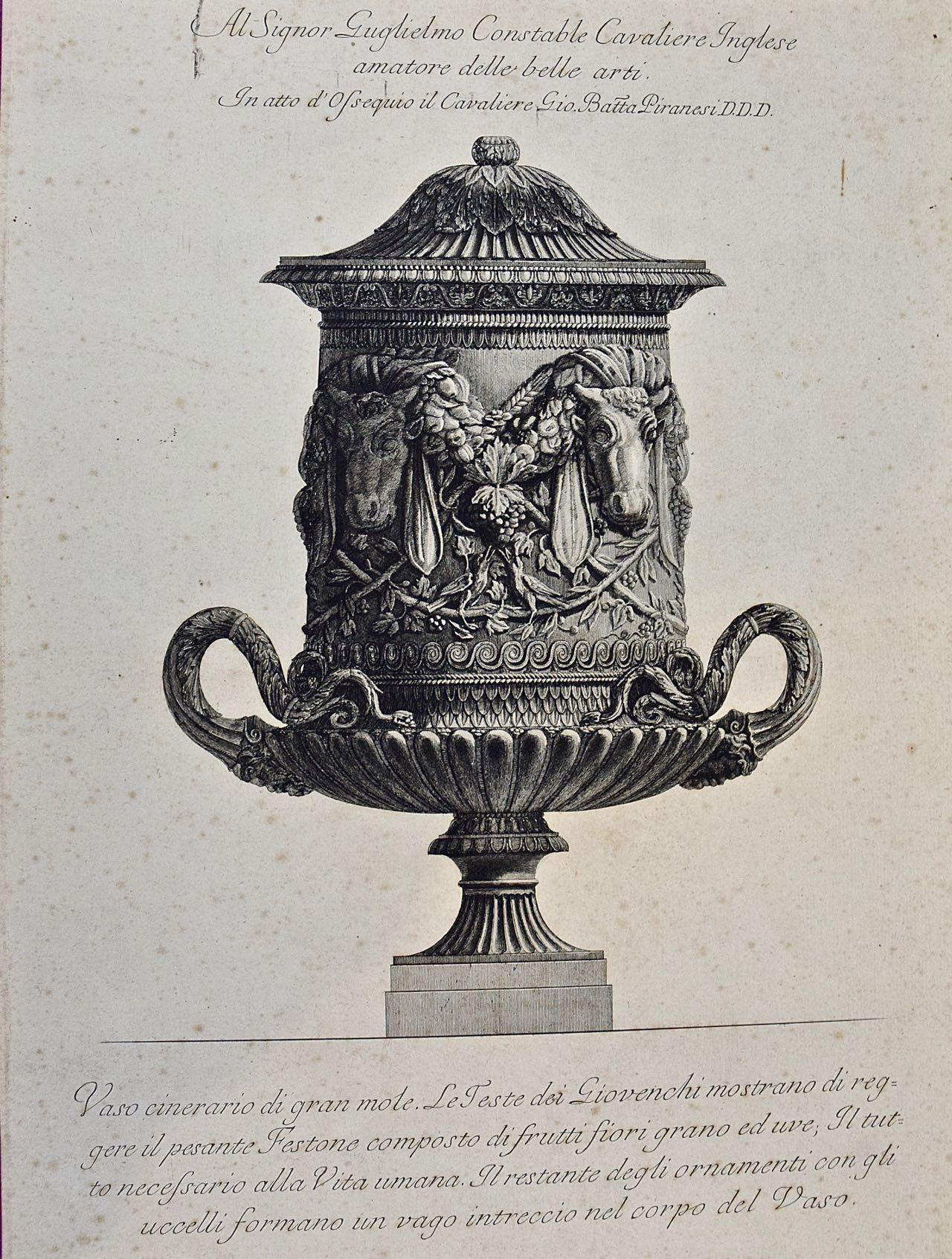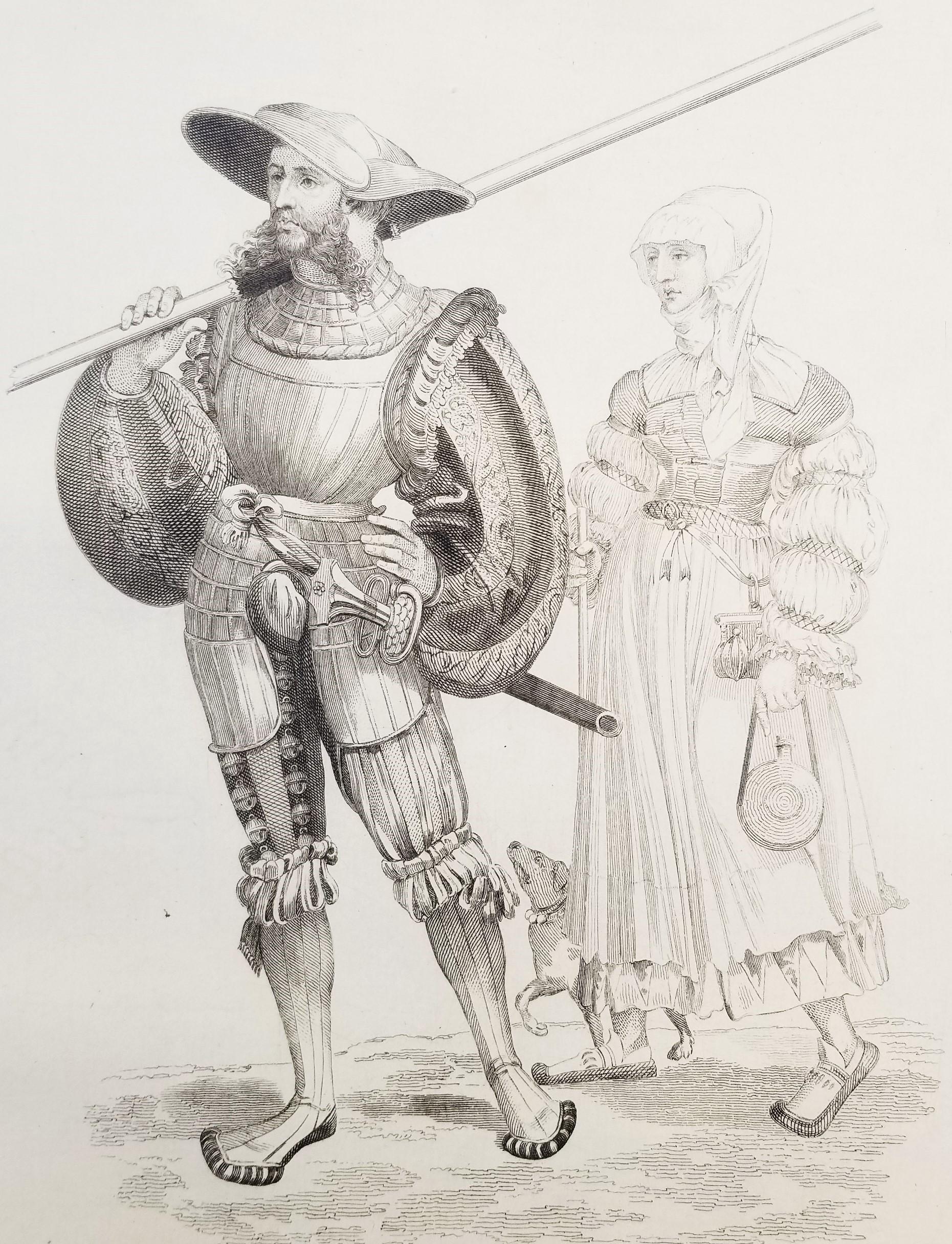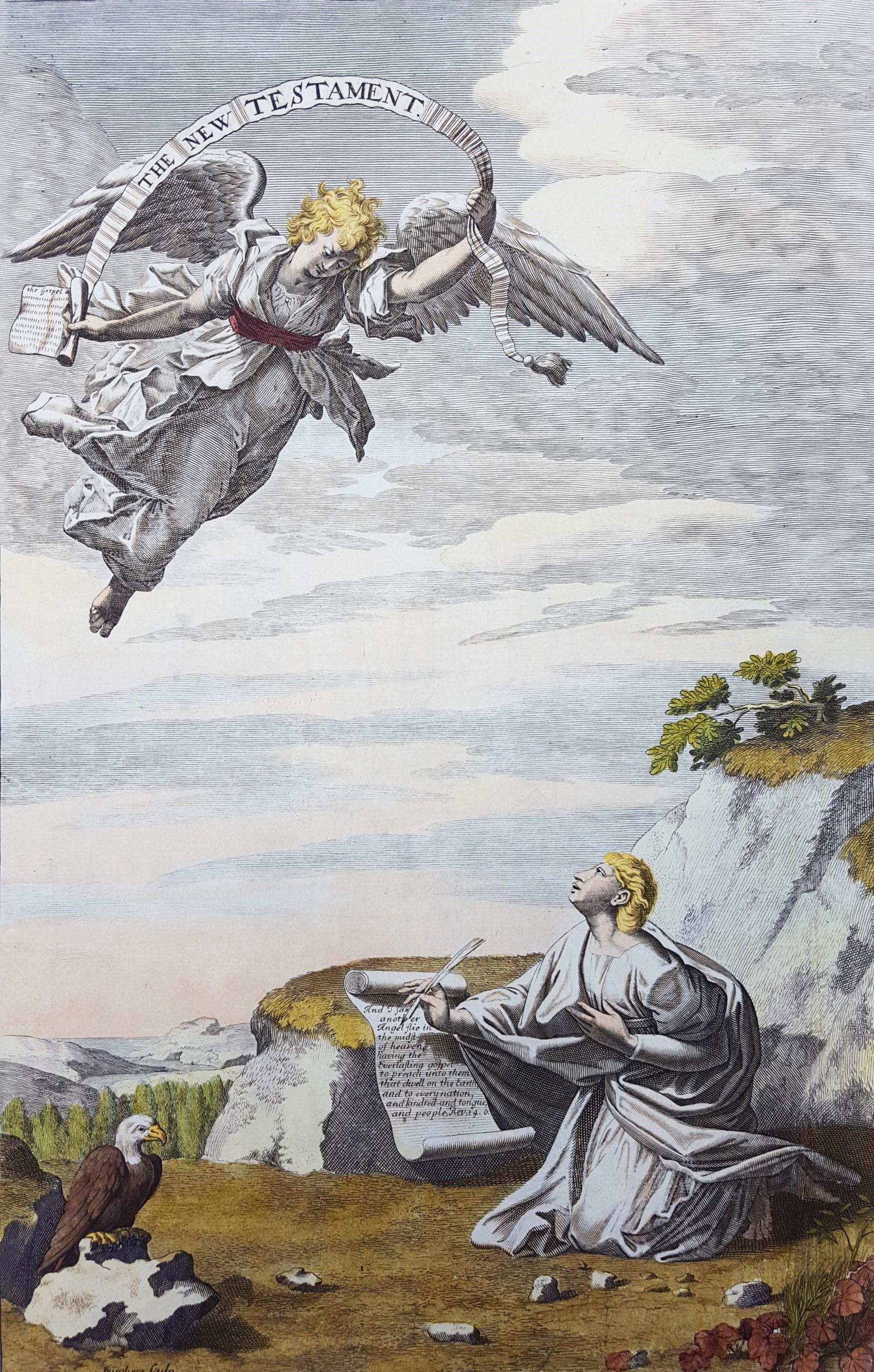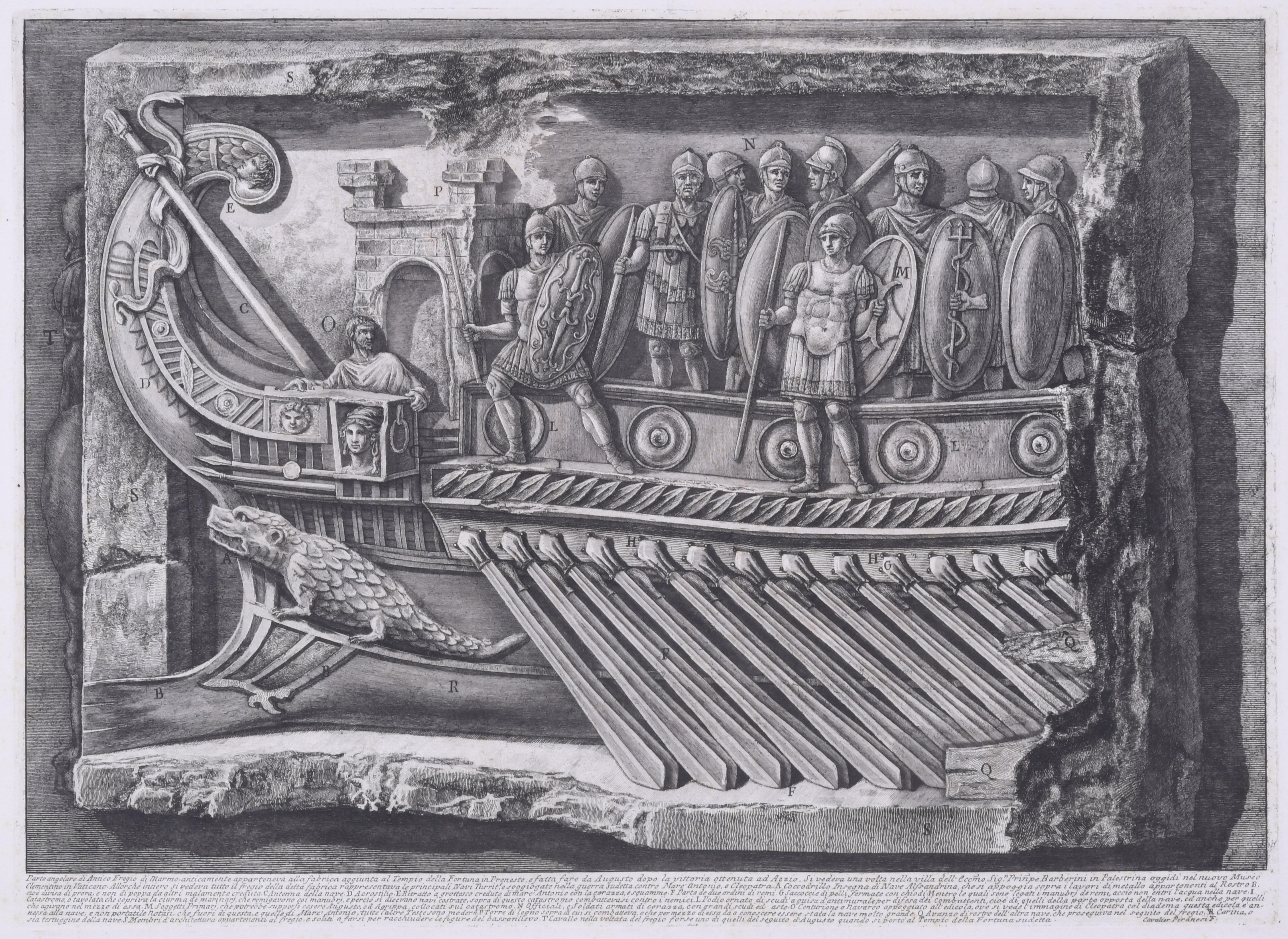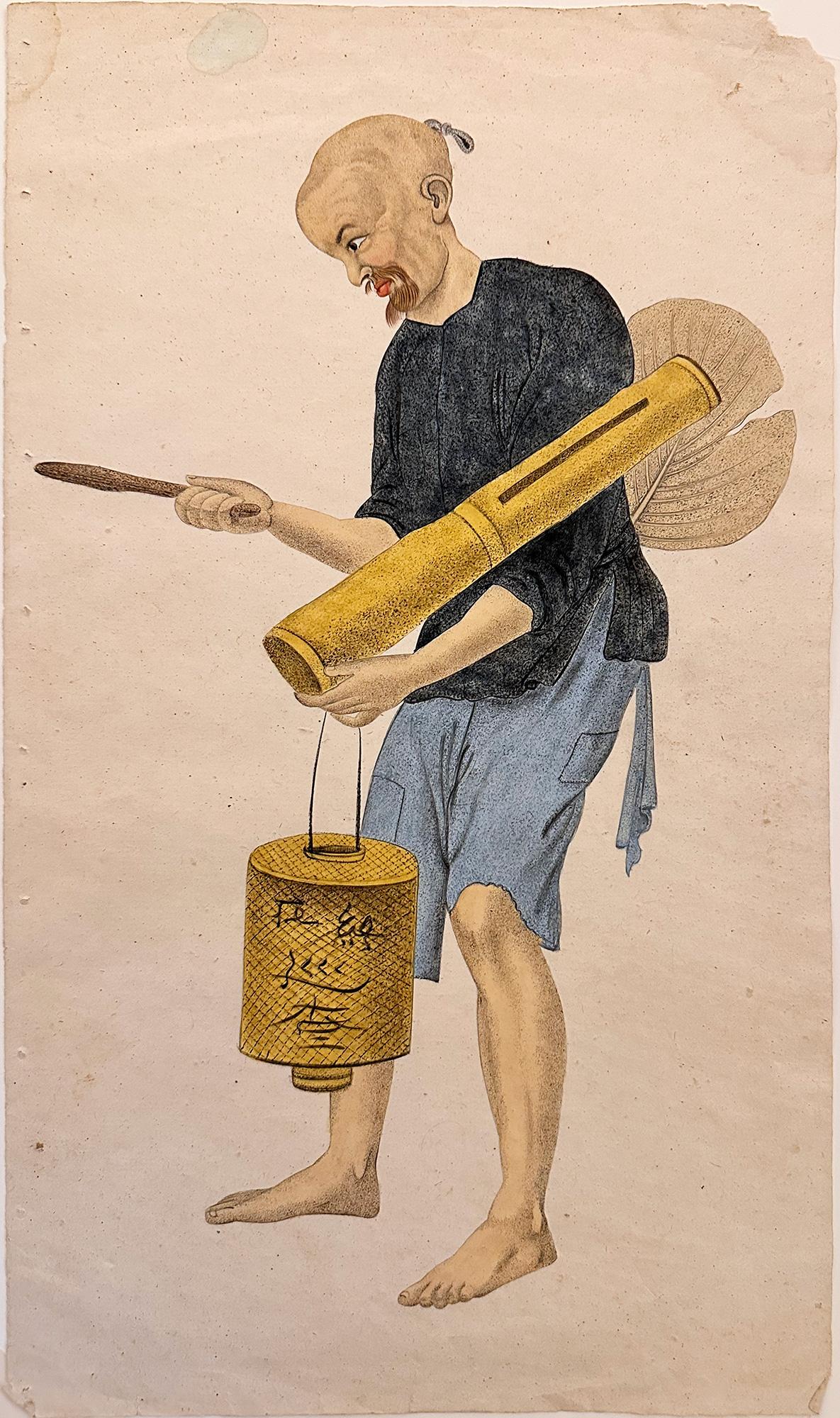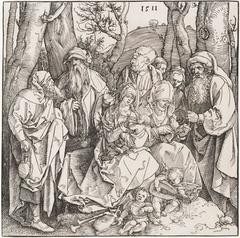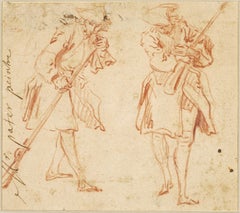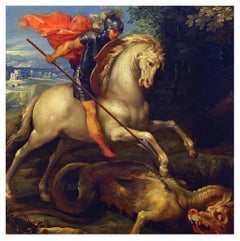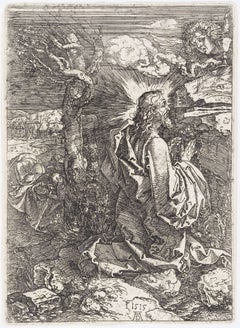
The Agony in the Garden
View Similar Items
Albrecht DürerThe Agony in the Garden1515
1515
About the Item
- Creator:Albrecht Dürer (1471-1528, German)
- Creation Year:1515
- Dimensions:Height: 8.75 in (22.23 cm)Width: 6.38 in (16.21 cm)
- Movement & Style:
- Period:
- Condition:In excellent condition, trimmed on or just outside the platemark all around.
- Gallery Location:San Francisco, CA
- Reference Number:Seller: 253831stDibs: LU91115530
Albrecht Dürer
Albrecht Dürer revolutionized woodcut printmaking as an artform and his influence over the medium's practitioners has endured for centuries. Revered for his masterfully detailed prints and drawings, the German artist was driven by boundless curiosity. Dürer was the Renaissance personified in 16th-century northern Europe — he was more deeply engaged in the pursuits of the era’s Italian painters than any other artist from the region, an attribute that earned him the title “Leonardo of the North.”
Trained initially as a goldsmith in his father’s workshop, Dürer’s talent for art materialized early, in a self-portrait at the age of 13 in 1484. Held in the Albertina Museum in Vienna, this silverpoint drawing is one of the oldest extant self-portraits in European art.
While Dürer traveled extensively, his two stays in Venice, which took place during the turn of the 16th century, were among the most influential. There he became increasingly acquainted with the work of great Italian artists including Gentile and Giovanni Bellini, Antonio Pollaiuolo, Leonardo da Vinci and a young Raphael. Naturally, Dürer found great inspiration in the Venetians’ theoretical interests, techniques, use of color and more.
Over the course of his career, Dürer received commissions from Frederick the Wise-Elector of Saxony, Emperor Maximilian I and the Holy Roman Emperor Charles V. At one point he was commissioned to draw the first living rhinoceros seen in Europe since the Roman Empire. Despite having never actually seen the animal, Dürer made the now-famous c. 1515 woodcut based on one written account and brief sketch. For years it remained the common interpretation of what rhinos looked like to Europeans.
Dürer’s woodcuts were widely disseminated during his time, and he is the best known artist associated with the Northern Renaissance. His breathtaking technical prowess is most prominent in his three master engravings — Saint Jerome in His Study, Melencolia I and Knight, Death, and the Devil — profoundly influential works that are characterized by rich textures and meticulously detailed imagery.
Dürer’s work is in the collections of many museums, including the National Gallery in London and the Metropolitan Museum of Art in New York, while his former home in Nuremberg, Germany, has been converted into a museum dedicated to his legacy. Important works like Hare and Praying Hands can be found in the Albertina, while his second famous self-portrait from 1500 — which depicts Dürer in a fur-trimmed robe — is on display in the Alte Pinakothek in Munich.
Find original Albrecht Dürer prints and other art on 1stDibs.
- The Death of the VirginBy Rembrandt van RijnLocated in San Francisco, CAA strong, dark 18th century impression of Bartsch's third and final state. Similar to that found in an impression of the same state in the collection of the Metropolitan Museum of Ar...Category
18th Century and Earlier Old Masters Interior Prints
Price Upon Request - The Virgin and Child in the CloudsBy Rembrandt van RijnLocated in San Francisco, CAOriginal etching and drypoint printed in black ink on laid paper. Signed and dated in the plate in the shadows lower center Rembrandt f. / 1641. An excellent, sharp and clear ...Category
18th Century and Earlier Old Masters Figurative Prints
MaterialsEtching
Price Upon Request - The Holy Family with Two Musical Angels"By Albrecht DürerLocated in San Francisco, CAOriginal woodcut printed in black ink on laid paper bearing the “Large Bear” watermark (Meder 89, typically seen in the earliest impressions of this woodcut). Dated in the block ...Category
Old Masters Figurative Prints
MaterialsWoodcut
Price Upon Request - Madonna and Child with the MonkeyBy Albrecht DürerLocated in San Francisco, CAA good, clear later 16th century Meder “l” impression, showing strong contrasts throughout, printed after the appearance of the dot in the clouds upper center. Catalog: Bartsch 42;...Category
18th Century and Earlier Old Masters Figurative Prints
MaterialsEngraving
Price Upon Request - The ShoemakerBy James Abbott McNeill WhistlerLocated in San Francisco, CAOriginal lithograph printed in black ink on China paper. Signed on the stone with the artist’s butterfly monogram upper center. A superb, richly printed impression of Spink’s only state From the edition of unknown size printed by Lemercier, Paris (apart from the posthumous edition of 58 printed by Goulding in 1904). Catalog: Spink 169; Levy 129; Way 151 Collections in which impressions from this edition can be found: Art Institute of Chicago (4 impressions); Hunterian Art Gallery, University of Glasgow (1 impression); British Museum, London (1 impression); Freer Art Gallery, Smithsonian Institution, Washington, D.C. (1 impression); National Gallery of Art, Washington, D.C. (1 impression); University of Michigan Museum of Art, Ann Arbor (1 impression); Boston Public Library (1 impression); Museum of Fine Art, Boston (1 impression); Cleveland Museum of Art (1 impression); Metropolitan Museum of Art, New York (2 impressions); Achenbach Foundation for the Graphic Arts, San Francisco (1 impression) . “The Shoemaker” was one of the first lithographs that Whistler made after his acrimonious break with his London printers, the Ways. It was entitled “The Shoemaker, Dieppe” by Rosalind Birnie Philip in her 1903 inventory of the artist’s estate, and indeed it does seem to have been drawn during a period when Whistler was making frequent Channel crossings...Category
19th Century American Impressionist Figurative Prints
MaterialsLithograph
- COMPAGNIE FRANCAISE DES CHOCOLATS ET DES THESBy Théophile Alexandre SteinlenLocated in San Francisco, CASigned on the stone lower right Steinlen, also bearing the artist’s printed monogram in the same area. A superb impression of Bargiel & Zagrodzki’s first version of this rare poster...Category
19th Century Figurative Prints
- Pair 17th Century Medical Anatomy Engravings by Francesco ValesioLocated in Rochester, NYTwo anatomical copper engravings by Francesco Valesio. From De humani corporis fabrica libri decem Evangelista Deuchino, On laid paper. 17th Century # nude male figureCategory
17th Century Old Masters Nude Prints
MaterialsLaid Paper
- Two military studies, a preparatory red chalk drawing by Jean-Baptiste PaterBy Jean-Baptiste PaterLocated in PARIS, FRAs Florence Ingersoll-Smouse wrote in 1921 in her book devoted to Jean-Baptiste Pater, "a painter of the Fête galante, Pater is interesting both by his intimacy with Watteau, to whom many of his works are still attributed, and by his own value as an artist.” This sanguine, full of life and spontaneity, is typical of the preparatory studies made by the painter to be used later in the composition of his paintings. 1. Jean-Baptiste Pater, pupil and disciple of Antoine Watteau Antoine Pater, Jean-Baptiste's father, belonged to the petty bourgeoisie of Valenciennes where he worked as a merchant-sculptor. His brother Jacques was a local painter who was probably involved in his nephew's training. Born on December 29, 1695, Jean-Baptiste Pater was first trained with Jean-Baptiste Guider, a local painter whose death in 1711 was probably the reason for Jean-Baptiste’s departure alongside Watteau, who was visiting Valenciennes. Watteau's difficult character led to their separation in 1713. Back in Valenciennes, Jean-Baptiste Pater encountered difficulties with the powerful Corporation of Saint-Luke (to which he refused to belong) which forced him to return to Paris in 1718. He reconciled with Watteau shortly before his death (on July 18th 1721), inherited the commissions that Watteau had been unable to fulfil and completed some of his paintings. Pater was accepted by the Académie Royale in 1725 but did not produce his reception painting The soldier’s revels until three years later. Throughout his brief career (he died at the age of forty on July 25th 1736), he mainly had a clientele of amateurs and received only one royal commission, shortly before his death. 2. Description of the drawing and related artworks Pater had adopted his master Watteau's method of composition. His study drawings were carefully glued in a notebook and were used to animate his compositions. His paintings sometimes suffer from a somewhat artificial composition, since the figures seem to be pasted one next to the other. This point has also been made about Watteau’s. The theme of military scenes (which was at the time included in the genre of Fêtes galantes!) was one of Pater’s favourite subjects. Together with the Bathing Women...Category
1720s Old Masters Figurative Prints
MaterialsChalk
- After Giuseppe Cesari (Italian 1568-1640) St. George Slaying the DragonBy Giuseppe CesariLocated in Sydney, NSWArtist: After Giuseppe Cesari (Italian 1568-1640) Title: St. George Slaying the Dragon Medium: Giclée Fine Art Print on Ilford Galerie Textured Cotton ...Category
16th Century Old Masters Figurative Prints
MaterialsArchival Ink, Rag Paper
- Church of St. Costanza, Rome: An 18th Century Piranesi Architectural EtchingBy Giovanni Battista PiranesiLocated in Alamo, CAThis is a framed 18th century Giovanni Battista Piranesi etching entitled: "Veduta interna del Sepocro di Santa Costanza, fabbricat...Category
1770s Old Masters Interior Prints
MaterialsEtching
- Crucifixion: 18th Century Etching by Conrad Metz after Daniele da VolterraLocated in Alamo, CA"Crucifixion" is an etching and aquatint, printed in brown ink by Conrad M. Metz after a painting by Daniele da Volterra. It was published in London in 1789 in 'Imitations Of Ancient...Category
Late 18th Century Old Masters Figurative Prints
MaterialsEtching, Aquatint
- Fabricius (Ponte Cestio) Bridge : Framed 18th C. Piranesi Architectural EtchingBy Giovanni Battista PiranesiLocated in Alamo, CAThis framed 18th century etching by Giovanni Battista Piranesi is entitled "Dimostransi nella Tav. presente la Pianta, ed Elevazione del Ponte, oggi detto Quattro Capi egli è antichissimo, e chiamavasi Fabrizio da L. Fabrizio Presid. delle Strade, che lo fabbrico' nel fine della Repubblica. "(The Plan and Elevation of the Bridge, today called Quattro Capi. The architect is very ancient, and was called Fabrizio da L. Fabrizio Presid. delle Strade, who built it at the end of the Republic). This is plate 18 in volume 4 of Piranesi's "Le antichita romane opera di Giambatista Piranesi architetto veneziano" (Roman antiquities by Giambatista Piranesi Venetian architect). It was published in Rome in 1756-1757. This etching depicts the plan and elevation of the bridge now called the Ponte dei Quattoro Capi or Ponte Cestio (Bridge of the Four Heads), which in antiquity was called the Bridge of Fabricius after L. Fabricius, the Superintendant of the Streets who built it at the end of the Republic, around 62 BC. It was also been known in the Middle Ages as ‘Ponte Giudeo’ (Bridge of the Jews). The bridge crossed from the left bank or northeast side of the Tiber River to Tiber Island...Category
1750s Old Masters Landscape Prints
MaterialsEtching
